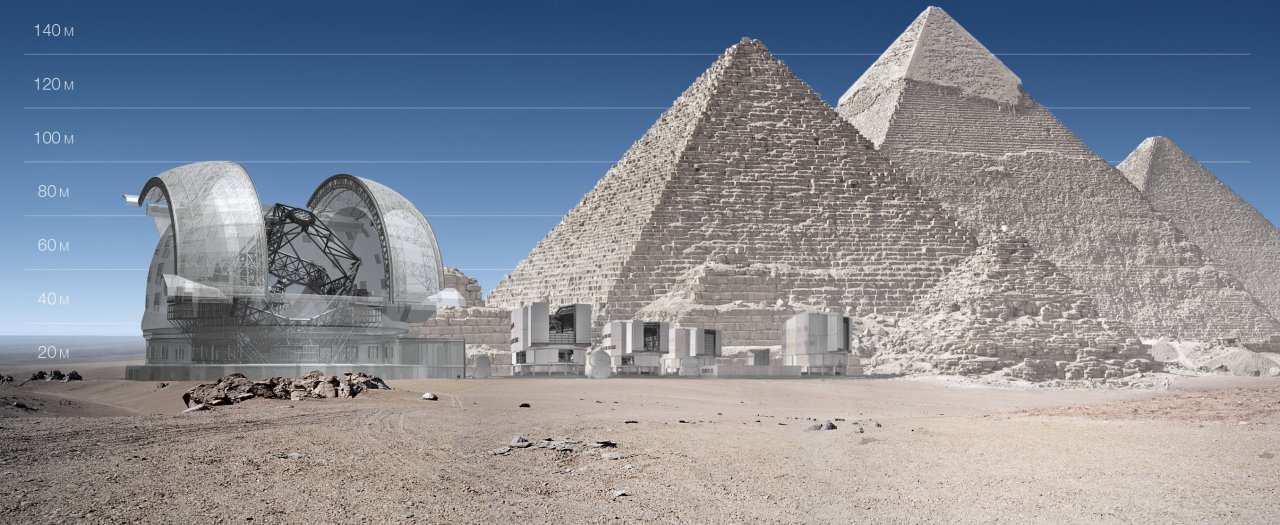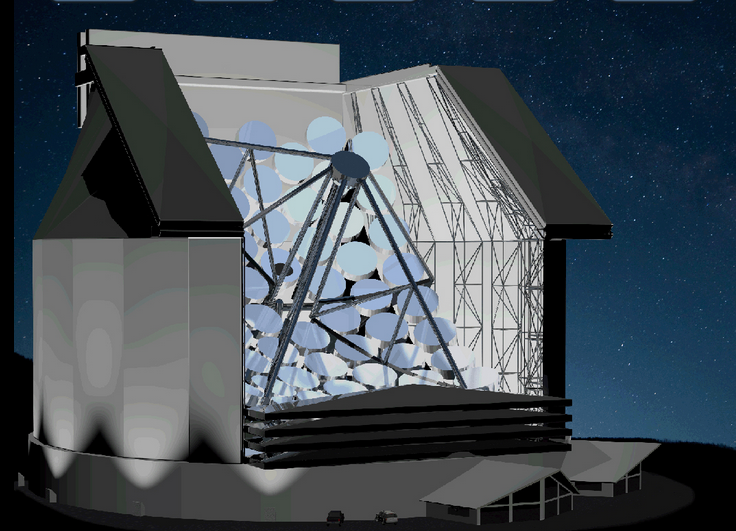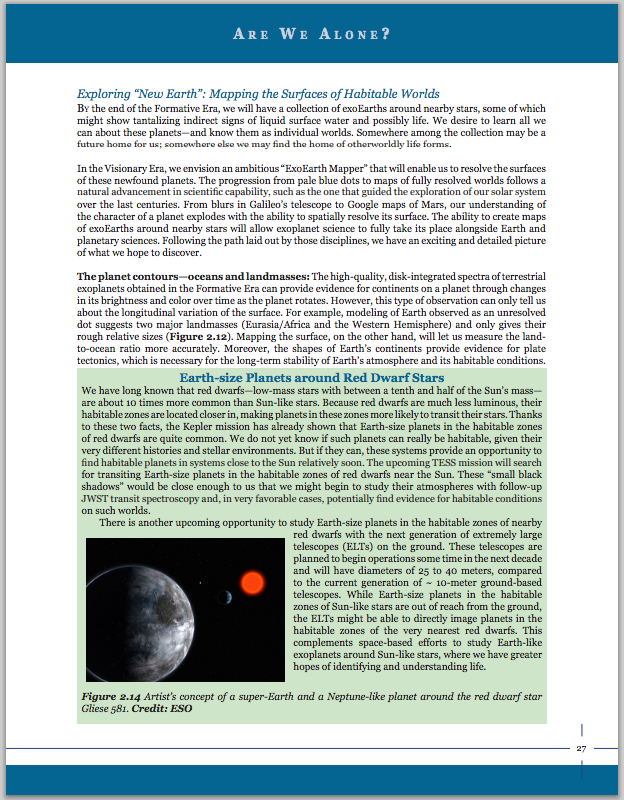It looks like you're using an Ad Blocker.
Please white-list or disable AboveTopSecret.com in your ad-blocking tool.
Thank you.
Some features of ATS will be disabled while you continue to use an ad-blocker.
share:
As for the question of whether we're alone, almost no one in the sciences believes that we are as evidence mounts that planets like the Earth are more
common than was thought even a generation ago.
The race to find life in the universe is a 3-way race between three different approaches:
1. The search for life in our solar system (Mars, eventually Europa, Titan and Enceladus).
2. SETI (Searches for detectable ET technology, radio, lasers, large scale engineering, artifacts)
3. Exoplanet biosignatures/biomarkers (Developing the technology to directly image small rocky worlds like Earth to look for signs of life in their atmosphere - Oxygen and Methane etc)
Which approach will be -the- one?
No one knows. But if I were going to Vegas I would place my bet on #3 being the one to win the race. There are a number of large ground based telescopes being built over the next decade in addition to the James Webb Space Telescope and even larger ones in development.




In fact, noted planet hunter Sara Seager has stated that due to advances in technology we will likely have the technology to find any life on planets around nearby M-dwarf stars by 2020.

That's less than a decade away.
Seth Shostak from SETI went a little further and said we almost certainly will find life out there within 20 years.


The race to find life in the universe is a 3-way race between three different approaches:
1. The search for life in our solar system (Mars, eventually Europa, Titan and Enceladus).
2. SETI (Searches for detectable ET technology, radio, lasers, large scale engineering, artifacts)
3. Exoplanet biosignatures/biomarkers (Developing the technology to directly image small rocky worlds like Earth to look for signs of life in their atmosphere - Oxygen and Methane etc)
Which approach will be -the- one?
No one knows. But if I were going to Vegas I would place my bet on #3 being the one to win the race. There are a number of large ground based telescopes being built over the next decade in addition to the James Webb Space Telescope and even larger ones in development.




In fact, noted planet hunter Sara Seager has stated that due to advances in technology we will likely have the technology to find any life on planets around nearby M-dwarf stars by 2020.

That's less than a decade away.
Seth Shostak from SETI went a little further and said we almost certainly will find life out there within 20 years.


edit on 24-4-2014 by JadeStar because: (no reason given)
a reply to: JadeStar
I really appreciate your reply. It is always pleasing to have someone with a grasp of the subject respond.
I will say, I would suppose you'll agree, that the 10 parsecs (33.6 light years) from our sun looks like a short strol compared to the vast distances shown in the picture.
I really appreciate your reply. It is always pleasing to have someone with a grasp of the subject respond.
I will say, I would suppose you'll agree, that the 10 parsecs (33.6 light years) from our sun looks like a short strol compared to the vast distances shown in the picture.
originally posted by: teamcommander
a reply to: JadeStar
I really appreciate your reply. It is always pleasing to have someone with a grasp of the subject respond.
I will say, I would suppose you'll agree, that the 10 parsecs (33.6 light years) from our sun looks like a short strol compared to the vast distances shown in the picture.
Absolutely. Space is vast. And that's an understatement
Still, within that 10 parsecs there are a LOT of interesting places where life may have developed and evolved.
One of the quiet revolutions in astronomy has been more interest turning from looking at massive energetic things far, far away (quasars, distant supernovae, etc) to small, meek, quiet stars in our own backyard, and any planets they may have.
We're about to learn a whole lot more about our little neck of the woods in the Milky Way, with greater and greater detail.
edit on 24-4-2014
by JadeStar because: (no reason given)
originally posted by: Aleister
a reply to: JadeStar
I for two must say how much I've missed your posts and threads lately. Said it before before I say it again, ATS is lucky to have you wandering the halls.
Thank you. I'll try to pop in here as time allows.
edit on 24-4-2014 by JadeStar because: (no reason given)
originally posted by: JadeStar
originally posted by: Snarl
originally posted by: teamcommander
originally posted by: Snarl
a reply to: teamcommander
I wonder what that picture will look like taken a hundred years from now.
A hundred years is less than the blink of an eye in real universal time.
The perspective won't even change very much by then.
I'd wager the resolution improves by a factor of a thousand. I'd wager we'd be seeing objects well beyond the accepted 13.8B LY limit.
Not really. At least not with a visible/near-IR telescope like Hubble.
Due to the redshift, they'd have to keep looking at lower and lower wavelengths of light, deep into the infrared, then millimeter radiation before ending up in radio.
See Cosmic Microwave Background Radiation.
Ooh, I don't know. There's something else out there and all around us. Measurements of what can be seen and what can be detected with current technologies aren't filling out the equation. Think DM and DE. What'll happen when we can 'see' them?
We've extended our abilities of perception farther than anyone would have anticipated 200 years ago. The Hubble deep field image surprised a lot of folks in your field too, didn't it?
Good to see you back and active on the boards.
originally posted by: Snarl
originally posted by: JadeStar
originally posted by: Snarl
originally posted by: teamcommander
originally posted by: Snarl
a reply to: teamcommander
I wonder what that picture will look like taken a hundred years from now.
A hundred years is less than the blink of an eye in real universal time.
The perspective won't even change very much by then.
I'd wager the resolution improves by a factor of a thousand. I'd wager we'd be seeing objects well beyond the accepted 13.8B LY limit.
Not really. At least not with a visible/near-IR telescope like Hubble.
Due to the redshift, they'd have to keep looking at lower and lower wavelengths of light, deep into the infrared, then millimeter radiation before ending up in radio.
See Cosmic Microwave Background Radiation.
Ooh, I don't know. There's something else out there and all around us. Measurements of what can be seen and what can be detected with current technologies aren't filling out the equation. Think DM and DE. What'll happen when we can 'see' them?
Well I suspect that DM and DE may be something like the neutrino.
No one ever will see a neutrino.
We know they exist because we can detect their effects when they pass through a detector. The effect we detect is a light flash.
So....did we see the neutrino? No but we know it exists.
Dark matter and dark energy are much the same.
We may someday have an explanation for them but I don't suspect we will ever see them in the same way that we have infrared, radio, gamma ray and xray astronomy.
We've extended our abilities of perception farther than anyone would have anticipated 200 years ago. The Hubble deep field image surprised a lot of folks in your field too, didn't it?
It idid. But it didn't violate the laws of physics. Deep as the Hubble Deep Field is, it does not and could never go beyond a certain distance point because it was taken in visible/near-IR light.
At some point there is a visual barrier where you will not see anything else in visible light. In order to see further back in time you have to look at lower and lower frequencies of light, eventually you run up against the wall that is the cosmic microwave background radiation.
There was even a Cosmos episode which talked about this last week. You should check it out
Good to see you back and active on the boards.
Thanks. Like I said, things are getting busier in my life but I will try to pop in from time to time when interesting news from my field is about to break or has already hit the headlines.
new topics
-
Ode to Artemis
General Chit Chat: 15 minutes ago -
Ditching physical money
History: 3 hours ago -
One Flame Throwing Robot Dog for Christmas Please!
Weaponry: 3 hours ago -
Don't take advantage of people just because it seems easy it will backfire
Rant: 4 hours ago -
VirginOfGrand says hello
Introductions: 5 hours ago -
Should Biden Replace Harris With AOC On the 2024 Democrat Ticket?
2024 Elections: 5 hours ago -
University student disciplined after saying veganism is wrong and gender fluidity is stupid
Education and Media: 8 hours ago -
Geddy Lee in Conversation with Alex Lifeson - My Effin’ Life
People: 9 hours ago -
God lived as a Devil Dog.
Short Stories: 9 hours ago -
Police clash with St George’s Day protesters at central London rally
Social Issues and Civil Unrest: 11 hours ago
top topics
-
Hate makes for strange bedfellows
US Political Madness: 14 hours ago, 20 flags -
Who guards the guards
US Political Madness: 16 hours ago, 13 flags -
University student disciplined after saying veganism is wrong and gender fluidity is stupid
Education and Media: 8 hours ago, 12 flags -
Police clash with St George’s Day protesters at central London rally
Social Issues and Civil Unrest: 11 hours ago, 9 flags -
TLDR post about ATS and why I love it and hope we all stay together somewhere
General Chit Chat: 11 hours ago, 7 flags -
Should Biden Replace Harris With AOC On the 2024 Democrat Ticket?
2024 Elections: 5 hours ago, 5 flags -
Don't take advantage of people just because it seems easy it will backfire
Rant: 4 hours ago, 4 flags -
One Flame Throwing Robot Dog for Christmas Please!
Weaponry: 3 hours ago, 4 flags -
God lived as a Devil Dog.
Short Stories: 9 hours ago, 3 flags -
Ditching physical money
History: 3 hours ago, 3 flags
active topics
-
Remember These Attacks When President Trump 2.0 Retribution-Justice Commences.
2024 Elections • 50 • : Asher47 -
British TV Presenter Refuses To Use Guest's Preferred Pronouns
Education and Media • 123 • : Annee -
"We're All Hamas" Heard at Columbia University Protests
Social Issues and Civil Unrest • 262 • : 777Vader -
Ode to Artemis
General Chit Chat • 0 • : BrotherKinsMan -
Should Biden Replace Harris With AOC On the 2024 Democrat Ticket?
2024 Elections • 40 • : YourFaceAgain -
-@TH3WH17ERABB17- -Q- ---TIME TO SHOW THE WORLD--- -Part- --44--
Dissecting Disinformation • 635 • : cherokeetroy -
Gold and silver prices....woo hoo
History • 85 • : worldstarcountry -
I have accepted I will be single the rest of my days
Relationships • 118 • : seekshelter -
Ditching physical money
History • 12 • : CataclysmicRockets -
Joe Biden Just Lost A Primary Election To A Man Nobody Heard Of Until A Minute Ago
2024 Elections • 18 • : WeMustCare
